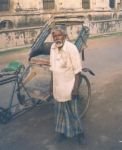
Northeast- East Asia old sea route to be restored
By Ratnadeep Choudhury
In order to increase trade relations between northeastern states and the Southeast Asian countries, New Delhi is contemplating on reopening old sea trade routes. Major plans have already been chalked out and New Delhi has already plunged its best foot forward to restore the Sittwe port in Myanmar, which earlier was used as an important sea port for trade with northeastern states. This was informed by Union Minister of state for Industries and Commerce Jairam Ramesh during a press conference at Agartala, during his recent visit to Tripura.
New Delhi has decided to invest Rs.4.5 billion for the infrastructure development of Myanmar's Sittwe port to connect northeastern states with East Asia. Earlier, New Delhi was keen to used the Chittagong port for building up trade relation between Northeastern states and neighbouring countries but off late Dhaka has gone cold on allowing India to use its resources for trans-country developmental project. The downbeat attitude of Bangladesh forced New Delhi to try other options, the restoration plans of Sittwe port being one of them. The Sittwe port, which was earlier known as Akyab, is planned to be connected with Mizoram through Kaladyn river. India's public sector organisation RITES is to rebuild the port, which is nearly 160 km away from Mizoram.
“ In accordance to Indo-Myanmar bilateral agreement, the work for this project would start next month and it would be completed within the next three years. Once completed, this project would bring a new lease of life in Northeast trade scenario,” Jairam Ramesh said.
Connecting the northeastern states with rest of southeast Asia could have been easier had the ports in Bangladesh were accessed, but New Delhi is now determined to do it without Bangladesh. “ Our message is clear. We wants to connect northeast with the South East Asian countries at any cost, even without Bangladesh,' Ramesh told while interacting with newsmen. He further added that after the Polls in Bangladesh are over and a new government takes charge there, New Delhi would again request Dhaka to allow India to use the port at Chittagong, Sherpur and Ashuganj. Ramesh also informed that New Delhi has decided to spend Rs.8.5 billion to develop 13 Land Customs Stations (LCSs) in the next three years to boost up trade with Pakistan, Nepal, Myanmar and Bangladesh. Of the 13 LCS, one is on the India-Pakistan border, four on the India-Nepal border, one on the India-Myanmar border and seven on the India-Bangladesh border, Agartala being one of these LCSs. “Agartala should be connected with Akhaura railway station in Bangladesh which is just 14 km away”, Ramesh opined.
The central government is also considering a plan to lay a sub-line to link the planned India-Myanmar gas pipeline for transporting natural gas. India is pushing the $3-billion pipeline plan to import gas from Myanmar through northeast. Centre is further going to promote private investment in Tripura and else where in Northeast. The Union Minister also hinted that the centre would soon announce its decision to extend the North-East Industrial Policy, which expires in March next year, with additional benefits and incentives


